Uncover the fascinating evolution of ancient Egyptian weaponry, from early stone tools to the advanced bronze khopesh and powerful chariots. These artifacts not only showcase military innovation but also reveal cultural values and the deep connection to divine symbolism.
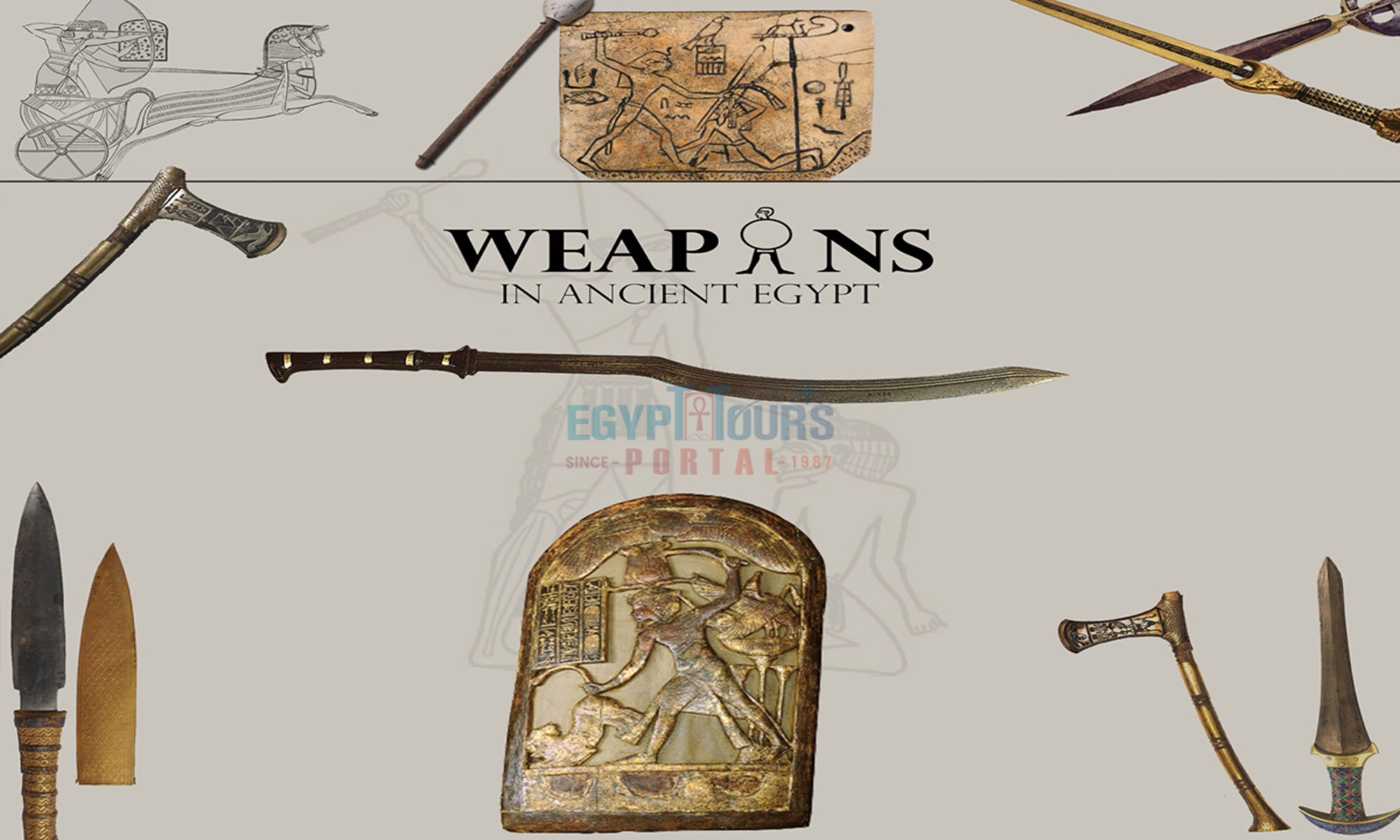
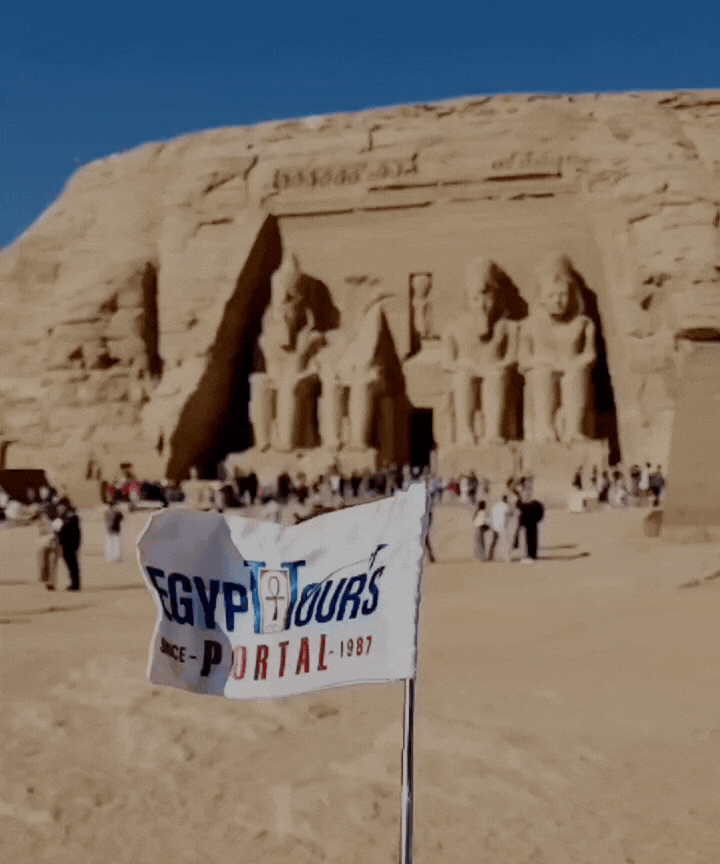
Weapons in ancient Egypt were not merely instruments of survival and conquest; they were profound expressions of the Egyptian Civilization's ingenuity, cultural values, and divine connections. For millennia, weaponry evolved from rudimentary stone tools to sophisticated bronze and iron arms, reflecting advancements in Ancient Egyptian Technology and the influences of neighboring cultures.
These weapons not only secured Egypt’s borders and facilitated its expansion but also served as symbols of authority, religious devotion, and societal status. From the elegantly curved khopesh to the formidable chariots that revolutionized battlefield tactics, Egyptian weapons embodied the duality of functionality and symbolism.
Whether wielded in the heat of battle, inscribed with sacred Hieroglyphs, or buried alongside pharaohs for protection in the afterlife, these tools of war tell a story of resilience, adaptation, and power. Through them, ancient Egypt asserted its dominance and left a legacy of military and cultural brilliance that endures to this day.
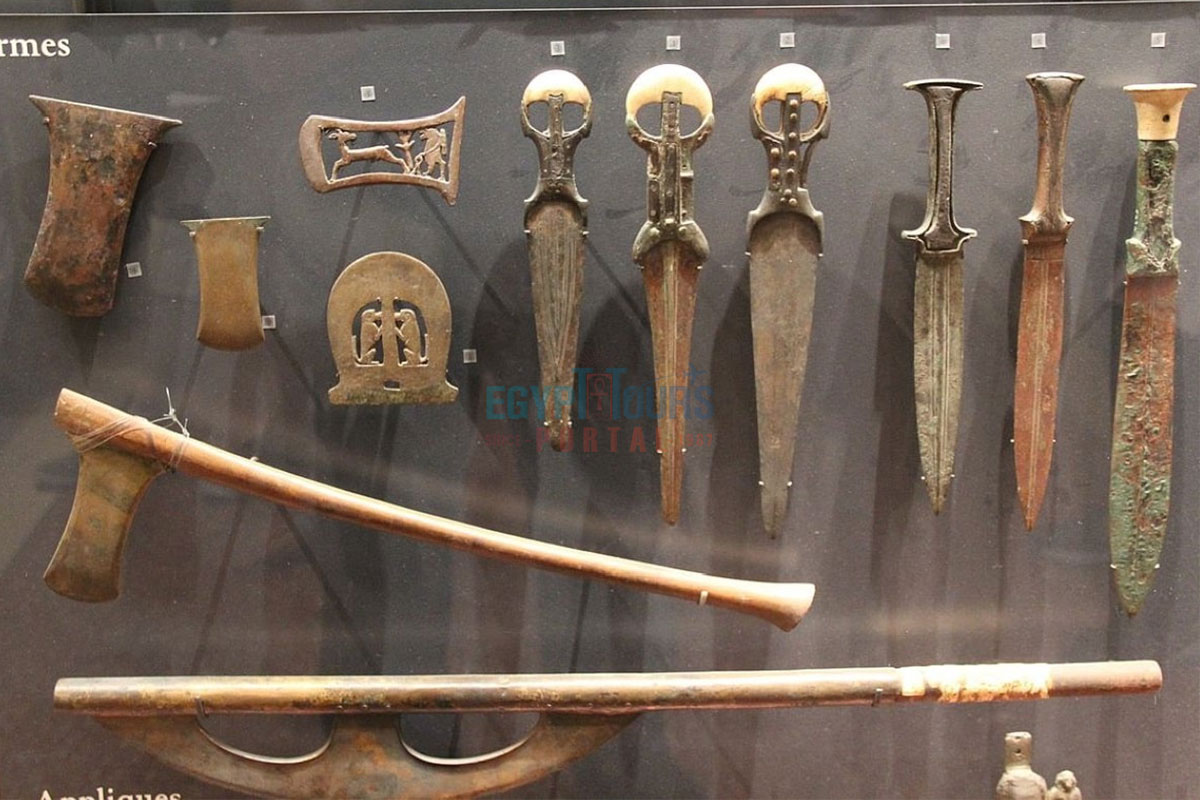
The evolution of Egyptian weaponry is proof of their ingenuity and ability to adapt to external threats and internal developments. During the Predynastic Period (before 3100 BCE) and Early Dynastic Period (c. 3100–2686 BCE), weapons were primarily rudimentary. Flint-tipped maces, wooden spears, and simple bows were common tools for hunting and local skirmishes. These were suitable for small-scale engagements typical of a relatively isolated society.
With the onset of the Old Kingdom (c. 2686–2181 BCE), Egyptian armies began to specialize. Soldiers relied on larger shields and copper-tipped spears, which were far superior to stone counterparts. However, during this time, Egypt faced little external threat, and the focus remained on internal stability.
The Middle Kingdom (c. 2055–1650 BCE) marked a significant leap. Copper weapons became widespread, and the military became more professional. Soldiers were organized into units, and regional conflicts necessitated better weaponry. Despite these advancements, Egypt’s isolation left them unprepared for the arrival of the Hyksos during the Second Intermediate Period (c. 1650–1550 BCE).
The Hyksos invasion introduced revolutionary technologies, including bronze metallurgy, the composite bow, and chariots. These innovations were quickly adopted and refined, paving the way for Egypt’s rise as a military power during the New Kingdom (c. 1550–1070 BCE).
During the New Kingdom, the Egyptians integrated their advanced weaponry into a highly organized military machine. Chariots, composite bows, and bronze swords like the khopesh were wielded by disciplined soldiers. These tools allowed Egypt to expand its empire, dominate its neighbors, and cement its reputation as a superpower of the ancient world.

Weapons in ancient Egypt were multifaceted, serving not only as tools for warfare but also as symbols of political authority, religious power, and social status. The pharaohs were often depicted with weapons in religious and ceremonial contexts, emphasizing their roles as both military leaders and divine protectors.
The Narmer Palette (c. 3100 BCE), for instance, illustrates King Narmer wielding a ceremonial mace, symbolizing his unification of Upper and Lower Egypt. Weapons were similarly tied to religious practices, as Egyptian Gods like Montu and Horus were often shown armed with weapons to signify strength and victory.
In times of war, weapons were instrumental in safeguarding Egypt’s wealth, resources, and borders. Pharaohs like Thutmose III (c. 1479–1425 BCE) and Ramses II (c. 1279–1213 BCE) used advanced weaponry and tactics to expand their territories, ensuring control over vital trade routes and resources, including gold from Nubia and timber from Lebanon. In peacetime, ceremonial weapons were displayed in temples or tombs, symbolizing eternal protection and readiness.
Explore the most epic tales and details about the ancient battles of the Egyptians.
Read More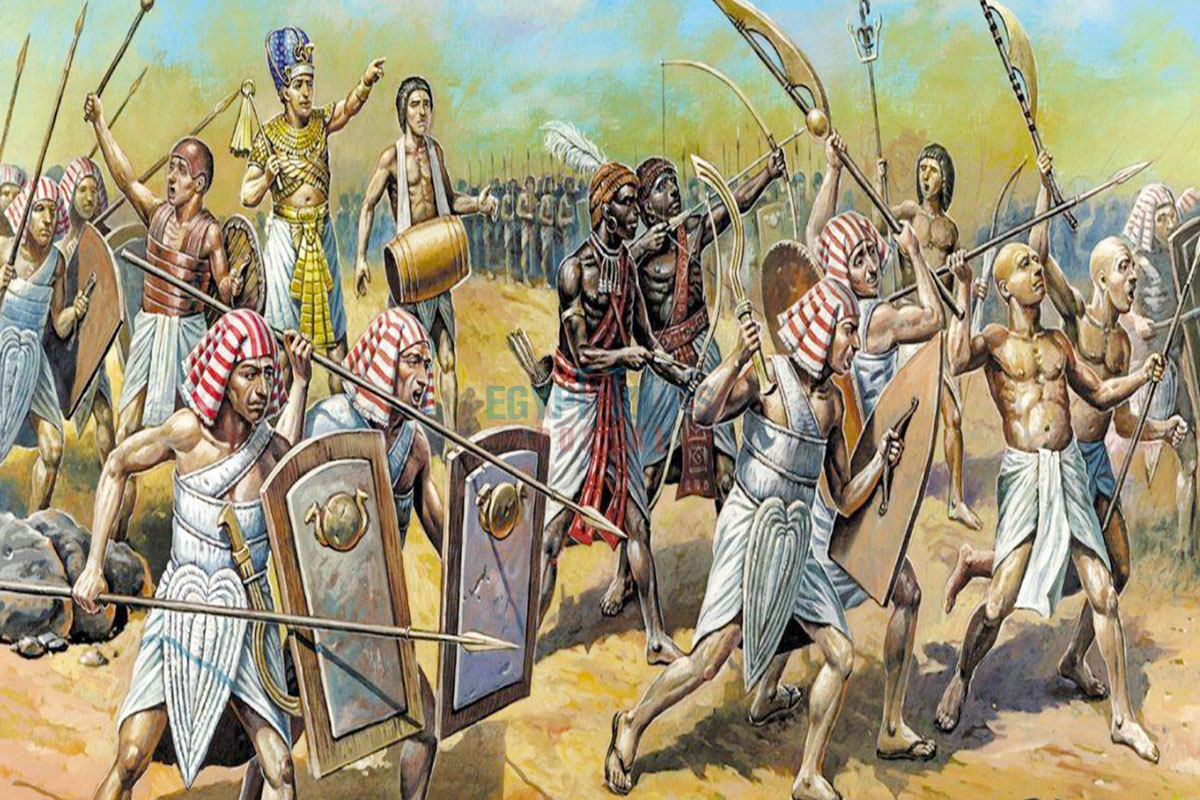
The Egyptian military arsenal included a variety of weapons, each tailored to specific combat needs:
These advancements reflected Egypt's strategic approach to combining offensive and defensive tactics.
Archery played a pivotal role in Egyptian military campaigns. The self-bow, used during the Old and Middle Kingdoms, was simple yet effective for long-distance engagements. However, the advent of the composite bow during the Hyksos period revolutionized Egyptian warfare. Made from laminated materials like wood, sinew, and horn, the composite bow was compact yet powerful, capable of piercing armor at greater distances.
Archers held a key position in the army, often deployed en masse to weaken enemy lines before a full-scale assault. The Battle of Megiddo (c. 1457 BCE), led by Thutmose III, highlighted the devastating effectiveness of archers. Tomb paintings and reliefs frequently depict Egyptian archers, showcasing their precision and prominence in battle.
The Egyptians utilized a range of melee weapons tailored for different combat scenarios:
These weapons evolved not only to meet the demands of war but also to symbolize the wealth and power of their owners.
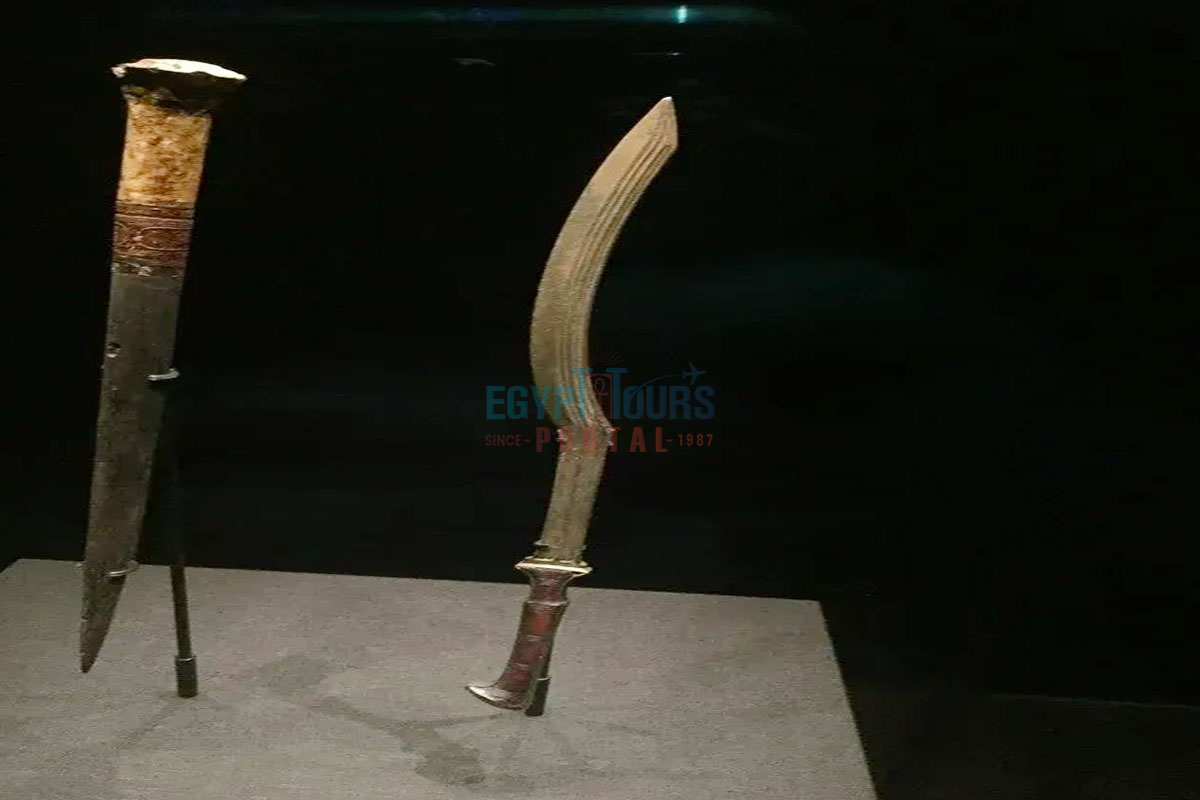
The khopesh, one of the most recognizable symbols of ancient Egyptian warfare, emerged as a product of cultural exchange and technological adaptation. Its origins can be traced to the Canaanite sickle swords used in Mesopotamia around 2000 BCE. This weapon type was initially developed for agricultural purposes but evolved into a powerful tool of war. The Egyptians encountered this design during their interactions with neighboring cultures in the Levant, mainly through trade and warfare.
By the Middle Kingdom (c. 2055–1650 BCE), Egypt had adopted the khopesh, refining its design to suit their specific needs. Unlike earlier straight-edged swords, the khopesh featured a distinct crescent-shaped blade. This curvature allowed it to function as both a slashing weapon and a tool for hooking and disarming opponents. The blade's outer edge was sharpened for cutting, while the inner curve could trap guns or shields, giving the wielder a tactical advantage in close combat.
During the New Kingdom (c. 1550–1070 BCE), the khopesh gained widespread use among Egyptian soldiers, particularly in the elite ranks. Pharaohs and generals often carried ornate versions of the weapon, which were as much ceremonial symbols as practical tools of war. The khopesh became associated with martial valor and divine protection, often depicted in temple reliefs and tomb carvings. For example, Ramses II, one of Egypt’s most celebrated warrior-pharaohs, is frequently shown wielding a khopesh in his battles against the Hittites, including the famous Battle of Kadesh (1274 BCE).
Many surviving examples of khopesh swords have been found in the tombs of high-ranking officials and pharaohs, indicating their dual role as weapons and symbols of power. Some were crafted from bronze, while later ceremonial versions incorporated gold, silver, and precious stones. Inscribed with hieroglyphic dedications or royal insignias, these weapons were intended to accompany their owners into the afterlife, ensuring eternal protection and status.
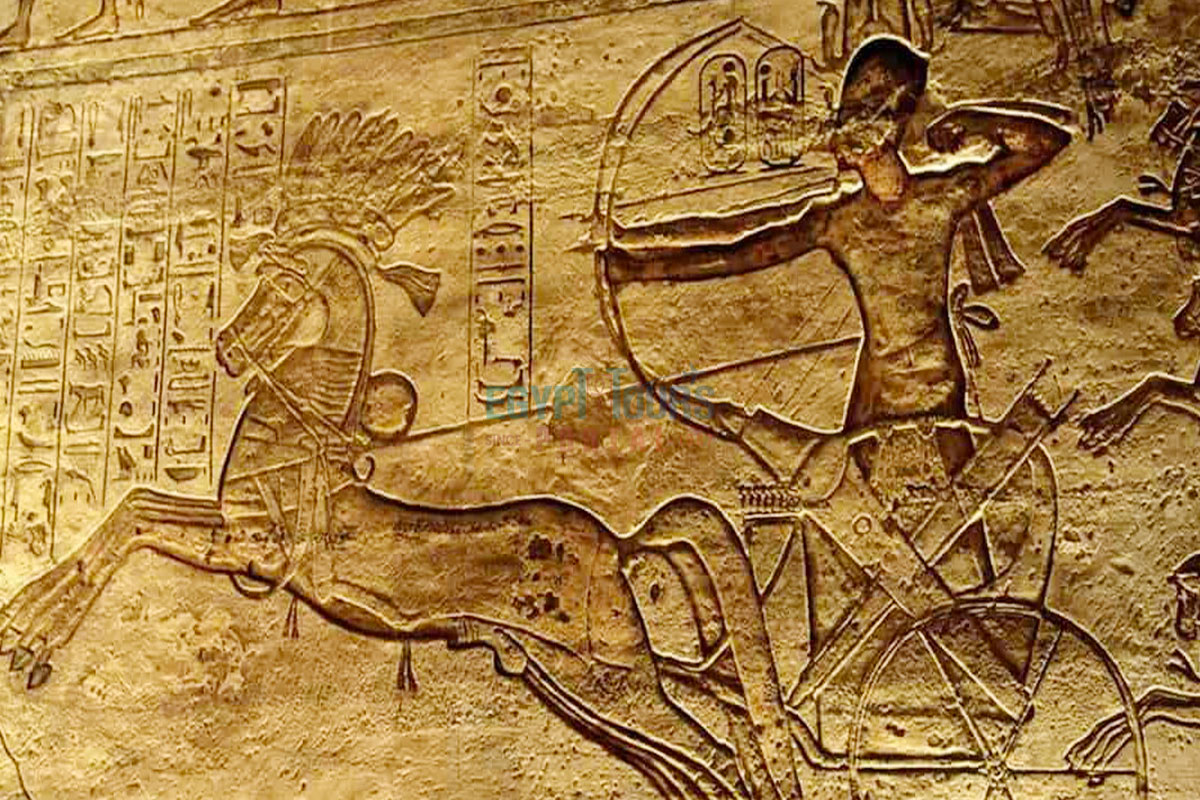
The introduction of chariots marked a revolution in Egyptian military strategy and technology, transforming their armies into highly mobile and formidable forces. Chariots were brought to Egypt during the Hyksos period (c. 1650–1550 BCE), when the Hyksos, a Semitic people from the Levant, introduced new weapons and tactics. By the New Kingdom, Egyptians had refined the chariot design, creating lightweight, fast vehicles that could easily navigate the open plains of the Near East.
Egyptian chariots were constructed from wood reinforced with leather and metal. Their lightweight design allowed two occupants: a driver and an archer. The platform's open-back design enabled quick dismounts and efficient firing of arrows, making the chariot a versatile tool for both offense and retreat. Horses, another innovation brought by the Hyksos, were bred and trained to pull the chariots at high speeds, providing a significant advantage in battle.
Chariots played a pivotal role in key Egyptian military victories. At the Battle of Megiddo (c. 1457 BCE), Thutmose III deployed chariots with precision, using them to encircle and overwhelm the Canaanite coalition. The Battle of Kadesh (1274 BCE) showcased the scale of chariot warfare, with Ramses II commanding thousands of chariots against the Hittites. These vehicles were not only weapons of war but also symbols of royal power and divine favor. Scenes of pharaohs riding chariots, drawing their bows, and charging into battle are iconic images of Egyptian art.
Beyond warfare, chariots held ceremonial significance. They were used in royal processions, hunting expeditions, and religious festivals, emphasizing their association with status and divinity. Pharaohs often credited their victories to the intervention of gods like Amun or Horus, and chariots became a visual representation of this divine partnership.
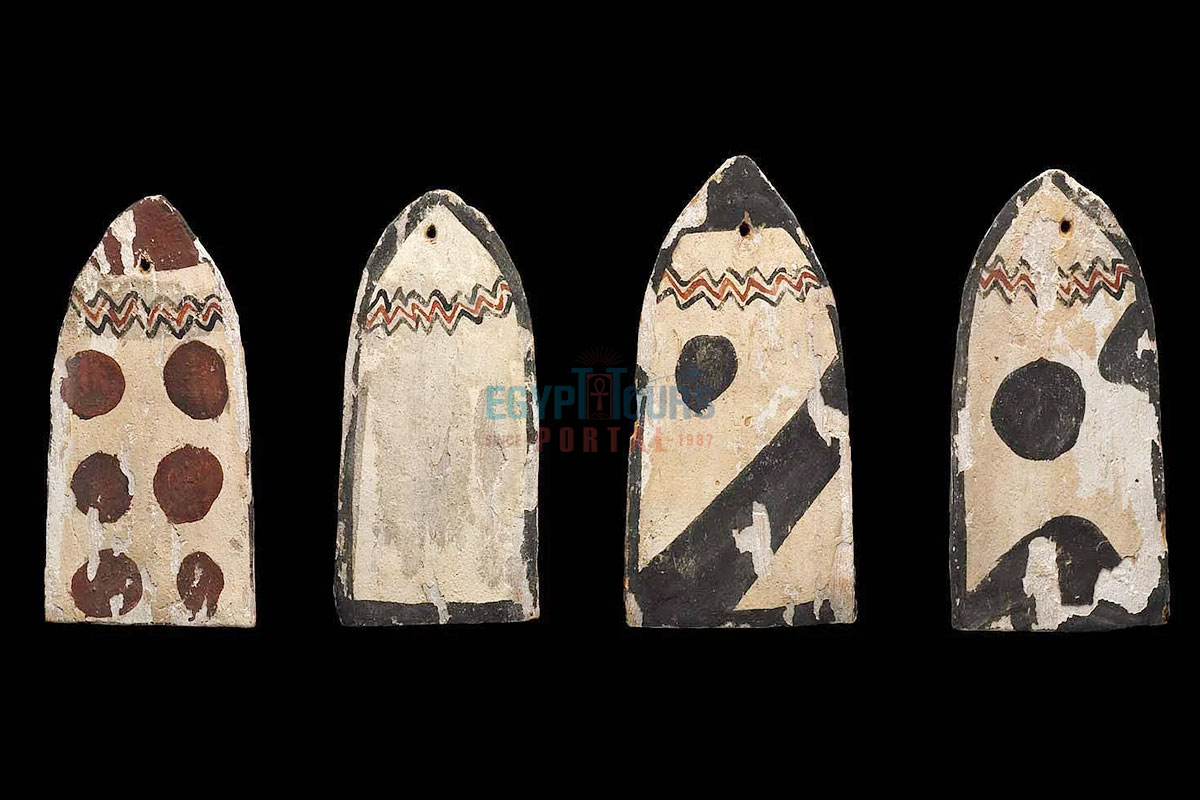
Egyptian shields and armor were designed to balance protection with mobility, essential for the fast-paced, strategic nature of their warfare.
Despite their simplicity compared to the heavy armor of other ancient armies, Egyptian shields and armor proved effective. Their lightweight design allowed soldiers to maintain agility, a crucial factor in the open-field battles characteristic of Egyptian warfare.
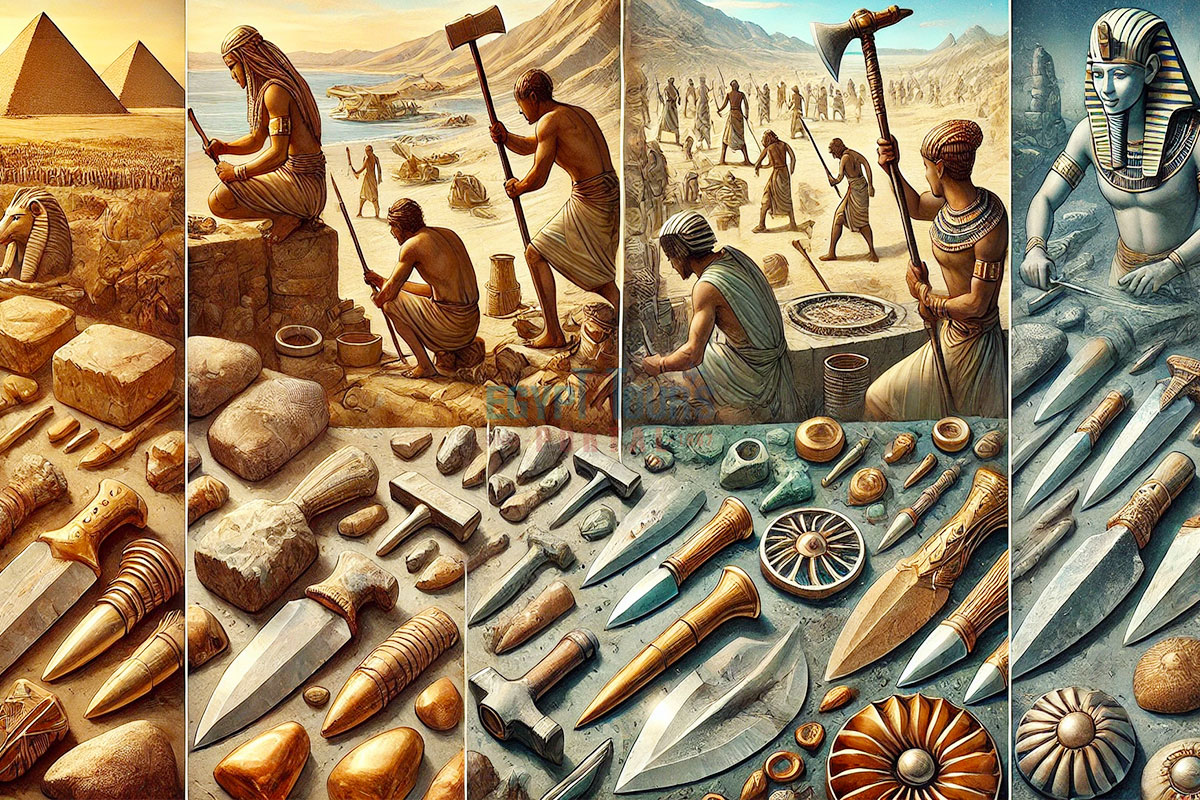
The materials used in ancient Egyptian weapons reflected the technological advancements and trade connections of the time:
The evolution of materials paralleled Egypt’s expanding trade networks. Tin, essential for bronze-making, was imported from the Near East, while local sources of copper ensured a steady supply for weapon production.

The adoption of bronze during the Second Intermediate Period (c. 1650–1550 BCE) marked a significant leap in Egyptian weapon-making. This durable alloy of copper and tin allowed for sharper blades, sturdier spearheads, and longer-lasting tools. Bronze weapons equipped the armies of the New Kingdom, enabling them to conquer vast territories and dominate their rivals.
The availability of bronze was closely tied to Egypt’s extensive trade networks. Tin, a rare commodity, was imported from regions such as Anatolia and the Near East, while copper was mined locally in the Eastern Desert and Sinai Peninsula. The strategic importance of these resources often influenced Egypt’s military campaigns, as controlling trade routes ensured a steady supply of materials for weapon production.
In addition to its functional advantages, bronze allowed for decorative weaponry. Many ceremonial daggers and swords from the New Kingdom were made from bronze, inlaid with gold or silver, and inscribed with hieroglyphic dedications. These weapons symbolized the wealth, power, and divine favor of their owners.
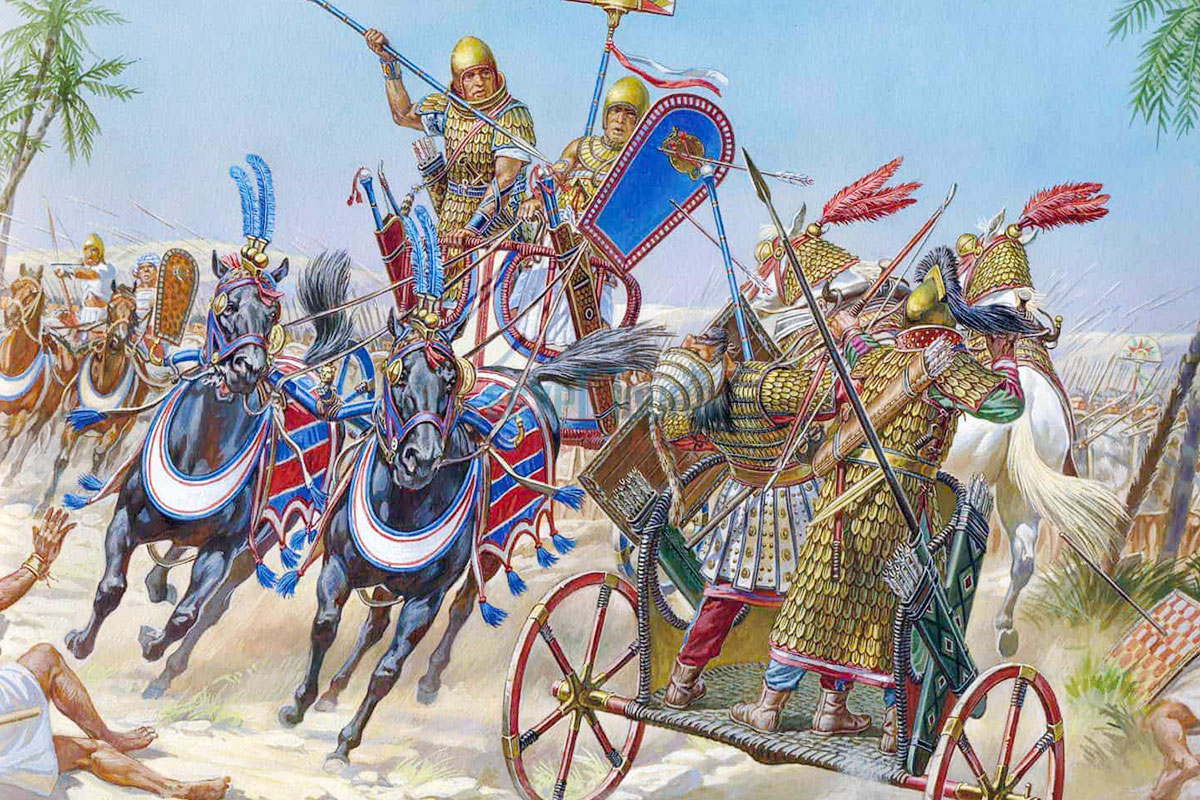
Egyptian military tactics combined discipline, innovation, and the strategic use of advanced weaponry. Infantry units formed the core of the army, organized into ranks of spearmen, archers, and shield-bearers. These soldiers operated in coordinated formations, often employing phalanx-like tactics to create a wall of shields and spears.
Chariots added a new dimension to Egyptian warfare. Their speed and mobility allowed for swift attacks, flanking maneuvers, and strategic retreats. Chariots encircled enemy forces at battles like Megiddo (c. 1457 BCE), cutting off their escape routes.
The Egyptians also utilized psychological warfare, showcasing their military might through grand displays of banners, chariots, and formations. This intimidation tactic and their advanced weapons and disciplined troops cemented Egypt’s reputation as a dominant military power.
All our Egypt Tour Packages and Nile cruises will provide a magical adventure leading to all the heavenly destinations of Egypt so pick your favorite and live a peaceful vacation worthy of remembering. By booking one of our epic tours, everyone can discover ancient Egyptian civilization's magnificent history and magical artifacts.
Private 4 Days Cairo Tour Packages for Indian Travelers 4 days Cairo Egypt Tour pack...
Tour Location: Cairo – Giza...
5 Days Cairo and Alexandria Tour Package For Indian Travelers 5 days Cairo and Alexa...
Tour Location: Cairo/Giza/Alexandria...
6 Days Cairo, Luxor & Aswan Tour Package For Indian Travelers 6 days Cairo, Luxo...
Tour Location: Cairo/Giza/Aswan/Luxor...
Amazing 7 Days Cairo and Hurghada Holiday for Indian Travelers 7 Days Cairo & Hu...
Tour Location: Cairo – Giza – Hurgh...
The ancient Egyptian army wielded a wide array of weapons designed for both scuffle and ranged combat. Among weapons, soldiers commonly used maces, clubs, daggers, spears, and the iconic khopesh, a curved sword that symbolized their military prowess. For ranged attacks, bows and arrows were the primary tools, with slings and javelins serving as supplementary weapons. Chariots, introduced during the Hyksos period, became integral to Egyptian warfare, offering both speed and devastating ranged capabilities. Defensive tools included shields made from wood and leather, as well as bronze-scale armor worn by elite soldiers. This versatile arsenal evolved over time, reflecting the Egyptians’ adaptability and strategic ingenuity.
Ancient Egyptian weapons were crafted from materials that evolved with technological advancements and trade connections. Early weapons, such as stone maces and flint knives, were made of chert and flint, providing sharp but limited durability. With the rise of the Old and Middle Kingdoms, copper became the dominant material, offering greater strength and flexibility. During the Second Intermediate Period, bronze—a harder alloy of copper and tin—replaced copper, significantly improving the quality of weapons such as the khopesh and spearheads. Wood was used for shields, bows, and chariots, while leather and sinew reinforced shields and composite bows. Iron, though rare, was occasionally employed for prestigious items like Tutankhamun’s meteoric iron dagger.
The evolution of ancient Egyptian weapons was shaped by technological progress and interactions with neighboring cultures. During the Predynastic Period, weapons were rudimentary, made from stone and wood, and used primarily for hunting and local conflicts. The introduction of copper in the Old Kingdom improved weapon strength, leading to the creation of durable maces, spears, and axes. A significant transformation occurred during the Second Intermediate Period, when the Hyksos introduced bronze, composite bows, and chariots, revolutionizing Egyptian warfare. By the New Kingdom, the Egyptians had perfected these technologies, incorporating them into a highly organized military structure. Advanced weapons like the khopesh and bronze armor became symbols of Egypt’s military dominance, enabling its expansion into the Near East and Nubia.
The bow and arrow were essential to ancient Egyptian warfare, serving as the primary ranged weapon for both hunting and combat. Early bows, known as self-bows, were simple in design, made from a single piece of wood, and effective for close-range engagements. During the Second Intermediate Period, the composite bow was introduced by the Hyksos, revolutionizing archery with its increased power, range, and portability. Archers became a vital component of Egyptian armies, using volleys of arrows to weaken enemy forces before engaging in melee combat. In major battles like Megiddo (c. 1457 BCE), archers played a decisive role in securing Egyptian victories. Additionally, the bow held symbolic importance, often depicted in art and used by pharaohs in ceremonial and military contexts.
Yes, the ancient Egyptians relied heavily on swords and spears as fundamental tools of warfare. Spears, used since the Predynastic Period, were versatile weapons suited for both thrusting in close combat and throwing at enemies from a distance. Infantry units frequently carried spears, which were often paired with shields for defensive formations. Swords, particularly the khopesh, became prominent during the New Kingdom. The khopesh’s distinctive curved blade allowed soldiers to slash and disarm opponents effectively, making it a favored weapon among elite troops. Swords and spears were not only practical in battle but also held ceremonial significance, often included in the tombs of pharaohs and high-ranking officials.
Chariots were a game-changing innovation in ancient Egyptian warfare, introduced during the Hyksos occupation and refined during the New Kingdom. Lightweight and maneuverable, Egyptian chariots were typically drawn by two horses and carried a driver and an archer. They allowed for swift, coordinated attacks, enabling soldiers to strike from a distance and then retreat before the enemy could retaliate. Chariots were used to flank enemy forces, chase down retreating opponents, and deliver precision attacks against vulnerable targets. They played a crucial role in battles like the Battle of Kadesh (1274 BCE), where Ramses II deployed thousands of chariots in a show of military might. Beyond their battlefield utility, chariots were symbols of status and power, often depicted in royal inscriptions and ceremonial processions.
Egyptian shields and armor were crafted to provide protection while maintaining mobility, suited to Egypt’s climate and combat strategies. Shields, widely used by infantry, were constructed from wood, such as sycamore, and covered with leather for durability. Some shields were reinforced with bronze edges, offering additional strength without compromising their lightweight design. Armor, though less common, evolved over time. Early soldiers relied on padded leather or cloth tunics for minimal protection. By the New Kingdom, elite troops wore bronze-scale armor, made by attaching small metal plates to leather or fabric. While not as heavy as the armor of other ancient armies, Egyptian defensive gear prioritized flexibility and speed, allowing soldiers to remain agile during battle.
Bronze, introduced to Egypt during the Second Intermediate Period, revolutionized weapon-making and military efficiency. This alloy of copper and tin was harder and more durable than pure copper, enabling the creation of sharper blades, stronger spearheads, and more effective arrowheads. Bronze was also used to produce ornate weapons like the khopesh, combining practicality with artistic craftsmanship. The availability of bronze was closely tied to Egypt’s trade networks, as tin—a key component—had to be imported from regions like Anatolia and the Near East. During the New Kingdom, bronze weapons became standard for the Egyptian military, allowing them to maintain a technological edge over their rivals. The use of bronze extended to ceremonial weapons, which were often inlaid with precious metals and inscribed with hieroglyphs, symbolizing power and divine protection.
The Egyptian military combined discipline, innovation, and advanced weaponry to execute effective battlefield tactics. Infantry formed the backbone of the army, with spearmen and shield-bearers creating defensive lines while archers launched coordinated volleys to weaken enemy forces. Chariots provided mobility and precision, used for flanking maneuvers, rapid assaults, and pursuing retreating foes. In addition to direct combat, Egyptians employed psychological warfare, intimidating enemies with grand displays of banners, chariots, and formations. They also utilized naval strategies, leveraging control of the Nile to transport troops and supplies efficiently. These tactics, supported by a well-organized army and superior weaponry, ensured Egypt’s dominance in the ancient world for centuries.
The entire country of Egypt deserve to be explored with its every heavenly detail but there are places that must be seen before any other such as the breathtaking Hurghada's red sea, The wonders of Cairo the pyramids of Giza, the great sphinx, the Egyptian Museum, Khan El Khalili Bazaar, the wonders of Luxor like Valley of the Kings, Karnak & Hatshepsut temple and the wonders of Aswan such as Abu Simbel temples, Philea temple, Unfinished obelisk and The Wonders of Alexandria like Qaitbat Citadel, Pompey's Pillar and Alexandria Library. Read more about the best places to visit in Egypt.
If you want to apply for a Visa On Arrival that lasts for 30 days then you should be one of the eligible countries, have a valid passport with at least 6 months remaining and pay 25$ USD in cash, as for the E-Visa for 30 day you should have a valid passport for at least 8 months, complete the online application, pay the e-visa fee then print the e-visa to later be presented to the airport border guard. You could also be one of the lucky ones who can obtain a free visa for 90 days. Read more about Egypt travel visa.
Egypt has a variety of delicious cuisines but we recommend “Ful & Ta’meya (Fava Beans and Falafel)”, Mulukhiya, “Koshary”, a traditional Egyptian pasta dish, and Kebab & Kofta, the Egyptian traditional meat dish.
The best time to travel to Egypt is during the winter from September to April as the climate becomes a little tropical accompanied by a magical atmosphere of warm weather with a winter breeze. You will be notified in the week of your trip if the Climate is unsafe and if any changes have been made.
You should pack everything you could ever need in a small bag so you could move easily between your destinations.
We have been creating the finest vacations for more than 20 years around the most majestic destinations in Egypt. Our staff consists of the best operators, guides and drivers who dedicate all of their time & effort to make you have the perfect vacation. All of our tours are customized by Travel, Financial & Time consultants to fit your every possible need during your vacation. It doesn't go without saying that your safety and comfort are our main priority and all of our resources will be directed to provide the finest atmosphere until you return home.
You will feel safe in Egypt as the current atmosphere of the country is quite peaceful after the government took powerful measures like restructuring the entire tourist police to include all the important and tourist attractions in Egypt. Read more about is it safe to travel to Egypt.
Wear whatever feels right and comfortable. It is advised to wear something light and comfortable footwear like a closed-toe shoe to sustain the terrain of Egypt. Put on sun block during your time in Egypt in the summer to protect yourself from the sun.
The best activity is by far boarding a Nile Cruise between Luxor and Aswan or Vise Versa. Witness the beauty of Egypt from a hot balloon or a plane and try all the delicious Egyptian cuisines and drinks plus shopping in old Cairo. Explore the allure and wonders of the red sea in the magical city resorts of Egypt like Hurghada and many more by diving and snorkeling in the marine life or Hurghada. Behold the mesmerizing western desert by a safari trip under the heavenly Egyptian skies.
There are a lot of public holidays in Egypt too many to count either religious or nation, the most important festivals are the holy month of Ramadan which ends with Eid Al Fitr, Christmas and new years eve. Read more about festivals & publich holidays in Egypt.
Egypt is considered to be one of the most liberal Islamic countries but it has become a little bit conservative in the last couple of decades so it is advised to avoid showing your chest, shoulders or legs below the knees.
Arabic is the official language and Most Egyptians, who live in the cities, speak or understand English or at least some English words or phrases. Fewer Egyptians can speak French, Italian, Spanish, and German. Professional tour guides, who work in the tourism sector, are equipped to handle visitors who cannot speak Arabic and they will speak enough English and other languages to fulfill the needs of all our clients.
The fastest way is a car, of course, a taxi. If you are in Cairo ride a white taxi to move faster or you could board the fastest way of transportation in Egypt metro if the roads are in rush hour.
The temperature in Egypt ranges from 37c to 14 c. Summer in Egypt is somehow hot but sometimes it becomes cold at night and winter is cool and mild. The average of low temperatures vary from 9.5 °C in the wintertime to 23 °C in the summertime and the average high temperatures vary from 17 °C in the wintertime to 32 °C in the summertime. The temperature is moderate all along the coasts.
It is the home of everything a traveler might be looking for from amazing historical sites dating to more than 4000 years to enchanting city resorts & beaches. You will live the vacation you deserve as Egypt has everything you could possibly imagine.









